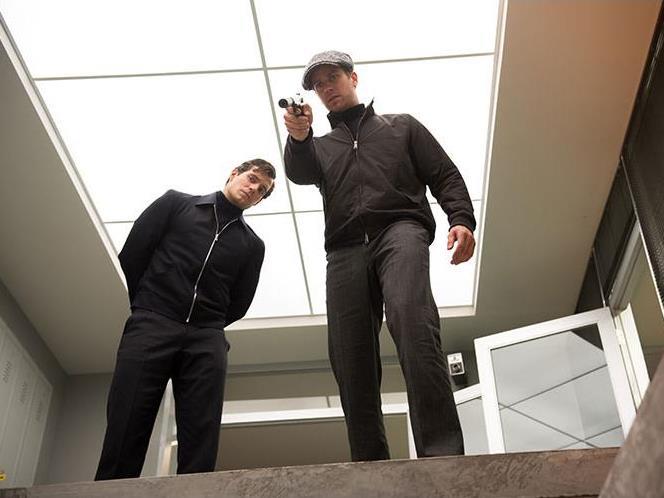Image: www.manfromuncle.com
Whatever other charges might be levelled at the films of Guy Ritchie, an absence of style isn’t one of them. Whether bouncing around chasing wannabe gangsters in underworld comedies Lock, Stock and Two Smoking Barrels and Snatch, or reimagining Sherlock Holmes in the action mould, he knows how to make an impact both within his frenetic frames, and in the gleefully way he wields them. With his in-your-face approach, Ritchie’s features feel kinetic and appear textured, a melange of movement and mise en scène that leaves an imprint even when the material doesn’t. Take his latest, The Man from U.N.C.L.E., for example; as the tale meanders around the usual espionage hijinks, the sheen of its ’60s setting and the aesthetic flourishes of many a spy film gone by are always evident.
Both serve the feature film adaptation of the 1964 television series of the same name well, as skilled thief turned CIA agent Napoleon Solo (Henry Cavill, Man of Steel) is tasked with extracting Gaby Teller (Alicia Vikander, Ex Machina) from East Berlin and using her family ties to a suspected Nazi scientist turned American collaborator to stave off a nuclear threat. The pair is then forced to team up with KGB operative Illya Kuryakin (Armie Hammer, Entourage) to infiltrate the operations of a wealthy couple, Alexander (Luca Calvani, To Rome with Love) and Victoria (Elizabeth Debicki, Macbeth) Vinciguerra, who have more than living in luxury on their minds.
So slides along a thin, Europe-set story, written by Ritchie with producer Lionel Wigram, as fleshed out with the usual markers of the genre. Shifting allegiances and overt double crossing are common, as are fast-paced fight and chase scenes, as The Man from U.N.C.L.E. goes through the amiable but trivial motions. Indeed, what routinely lets the filmmaker down — which both Sherlock Holmes (2009) and its sequel, Sherlock Holmes: A Game of Shadows (2011) proved, too — is piecing together a narrative around set-pieces, rather than vice versa. Ritchie knows how to engage in an instant, but when he’s working on a bigger scale than his usual crime capers, he forgets how to prolong attention.
The duelling, duplicitous duo of Solo and Kuryakin — aka Cavill and Hammer — also demonstrate the same traits by being broadly charming while utterly generic. As far as casting two sides of the same suave, suited coin goes, the film couldn’t have done better than its leading men; however their shared attractive strengths are also matched by their mirrored by-the-numbers performances. Thankfully, both Vikander and Debicki bring the spice and intrigue the movie otherwise lacks, each continuing their spate of fine roles. Where the rest of the gorgeously period-staged film and its players — Jared Harris (Poltergeist) and Hugh Grant (Cloud Atlas) as higher-ups included — remain content with being handsome, the actresses endeavour to be something else interesting.
Small splashes of something more, such as a score by Daniel Pemberton (Cuban Fury) that’s reminiscent of the jauntiness of the western genre, as well as an overall upbeat attitude, help The Man from U.N.C.L.E. glide towards an explanation of its titular acronym (United Network Command for Law and Enforcement) and the inevitable sequel set-up — and while a generally fun time is had in the process, so is a forgettable one. Alas, elegance and playfulness only goes so far, particularly when they’re the film’s core components.
Rating: 2.5 stars out of 5
The Man from U.N.C.L.E.
Director: Guy Ritchie
US / UK, 2015, 116 mins
Release date: August 13
Distributor: Roadshow
Rated: M
Actors:
Director:
Format:
Country:
Release:





